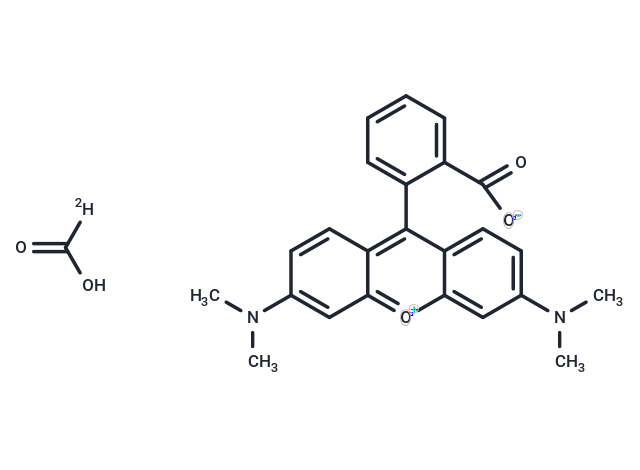Shopping Cart
Remove All Your shopping cart is currently empty
Your shopping cart is currently empty
5(6)-TAMRA (5(6)-Carboxytetramethylrhodamine) contains a carboxylic acid that can be used to react with primary amines via carbodiimide activation of the carboxylic acid. It is bright, orange-fluorescent dye produces conjugates with absorption/emission maxima of ~555/580 nm.

| Pack Size | Price | USA Warehouse | Global Warehouse | Quantity |
|---|---|---|---|---|
| 50 mg | Inquiry | 7-10 days | 7-10 days | |
| 100 mg | Inquiry | 7-10 days | 7-10 days |
| Description | 5(6)-TAMRA (5(6)-Carboxytetramethylrhodamine) contains a carboxylic acid that can be used to react with primary amines via carbodiimide activation of the carboxylic acid. It is bright, orange-fluorescent dye produces conjugates with absorption/emission maxima of ~555/580 nm. |
| Cell Research | I. Peptide and protein labeling 1. Labeling reaction: 5(6)-TAMRA is reacted with the target peptide or protein, usually by amidation reaction to connect the dye molecule. Depending on the desired labeling effect, the reaction conditions, such as pH, reaction time and temperature, may need to be optimized. 2. Purification of labeled protein: After the reaction, unreacted dye is usually removed by dialysis or chromatography. 3. Fluorescence detection: Use fluorescence microscopy or flow cytometry for analysis to observe the presence and behavior of fluorescently labeled proteins or peptides. II. Cell labeling and imaging 1. Add 5(6)-TAMRA to the cell culture medium and incubate for a certain period of time (usually 30 minutes to 1 hour). 2. Wash to remove unabsorbed dye. 3. Use fluorescence microscopy or flow cytometry for observation and analysis of cell staining patterns and dynamic processes. III. Protein-protein interaction study: 1. Labeling target protein: 5(6)-TAMRA is labeled with the target protein. 2. Interaction with another protein: react the labeled protein with another unlabeled protein. 3. Fluorescence monitoring: monitor protein-protein interactions using FRET or fluorescence microscopy. |
| Synonyms | 5(6)-Carboxytetramethylrhodamine |
| Molecular Weight | 860.92 |
| Formula | C50H44N4O10 |
| Cas No. | 98181-63-6 |
| Smiles | [2H]C(O)=O.CN(C)c1ccc2c(-c3ccccc3C([O-])=O)c3ccc(cc3[o+]c2c1)N(C)C |
| Relative Density. | no data available |
| Storage | keep away from direct sunlight | Powder: -20°C for 3 years | In solvent: -80°C for 1 year | Shipping with blue ice/Shipping at ambient temperature. | |||||||||||||||||||||||||||||||||||
| Solubility Information | DMSO: 120 mg/mL (139.39 mM), Heating is recommended. | |||||||||||||||||||||||||||||||||||
Solution Preparation Table | ||||||||||||||||||||||||||||||||||||
DMSO
| ||||||||||||||||||||||||||||||||||||
| Size | Quantity | Unit Price | Amount | Operation |
|---|

Copyright © 2015-2026 TargetMol Chemicals Inc. All Rights Reserved.